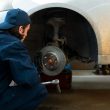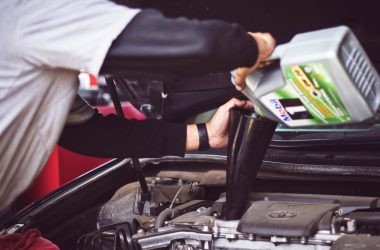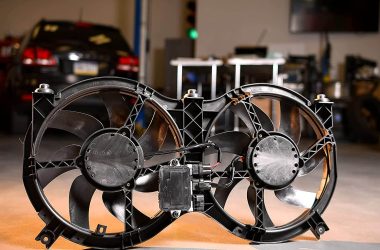When it comes to performance cars, few engines have sparked as much discussion as the FA20. Found in popular platforms like the Subaru BRZ, Toyota 86, and Scion FR-S, the FA20 is revered for its balance of affordability, efficiency, and performance potential. But one question automotive enthusiasts and tuning communities frequently ask is this:
How much power can the stock block FA20 Make before it succumbs to the laws of physics and engineering?
If you’re looking to push the limits of your FA20, this article will provide you with the insight you need to make informed decisions. We’ll cover the capabilities of the stock block, the risks involved, and modifications that can help extract maximum horsepower safely.
Table of Contents
What Is the FA20 Engine?
Before we dig into the specifics of power limits, it’s essential to understand what makes the FA20 such a beloved platform. Engineered by Subaru, the FA20 is a 2.0L naturally aspirated flat-four (boxer) engine featuring direct and port fuel injection. While it comes naturally aspirated in the Subaru BRZ and Toyota 86, a turbocharged version, the FA20DIT (Direct Injection Turbo), powers models like the Subaru WRX.
Key characteristics of the FA20 include:
- Compression Ratio: 12.5:1 (naturally aspirated)
- High-Revving Nature: Redline of approximately 7,400 rpm
- Boxer Design: Offers a low center of gravity for better handling
- Aluminum Construction: Lightweight but not excessively durable when dialing up power
This engine was designed primarily for an exhilarating and balanced driving experience, rather than brute horsepower figures. However, like any good enthusiast engine, it has untapped potential that attracts tuners worldwide.
How Much Power Can the Stock FA20 Handle?
Now, the big question—how much power can a stock FA20 block reliably support? The exact answer depends on several factors, including the engine’s condition, your tuning strategy, and how you plan to use your car (e.g., daily driving vs. track days). That said, the general consensus is as follows:
Naturally Aspirated FA20 (NA)
The stock NA FA20 (BRZ/86 platform) can handle around 230–250 horsepower at the crank reliably. This figure aligns with modifications like higher-flow intake and exhaust systems, upgraded headers, and a proper ECU tune.
Attempting to push beyond these figures without internal upgrades is considered risky. Why? With a high compression ratio (12.5:1), running lots of additional bolt-on power can lead to increased stress on the pistons, connecting rods, and valves.
Turbocharged or Supercharged Builds
When forced induction enters the picture, things get much more exciting—but also much riskier. With a turbocharger or supercharger, the stock FA20 block can reliably handle approximately 300–350 horsepower at the crank (about 260–300 wheel horsepower).
This assumes:
- Proper tuning (to prevent detonation)
- Reasonable boost levels (6–8 psi)
- High-octane fuel (such as 93 or higher)
However, pushing past the 350-horsepower mark is where you’re likely to find the limitations of the stock internals. At this point, the pistons and rods become the primary failure points. The 12mm head bolts used in this engine also struggle to maintain proper head gasket seal under higher cylinder pressures.
The FA20DIT (Subaru WRX Variants)
The FA20DIT found in the Subaru WRX—thanks to its lower compression ratio (10.6:1) and factory turbocharger—has a slightly higher tolerance. It’s not uncommon for the FA20DIT to reach 350–400 crank horsepower with basic modifications like a larger turbo and injectors, along with a professional tune. However, its internals share limitations similar to its naturally aspirated sibling when subjected to excessive torque and cylinder pressure.
Risks of Pushing the Limits
Achieving big horsepower numbers on the stock FA20 block often comes at a cost. Below are the most common risks when pushing this engine beyond its factory specifications:
1. Rod Failure
The FA20’s connecting rods are one of the engine’s weakest points. At higher power levels—especially with forced induction—rods are prone to bending or snapping under stress, particularly under high torque loads at low RPM.
2. Piston Damage
The factory pistons are designed for light weight but sacrifice strength. Detonation (“knocking”) caused by poor tuning or fuel shortages can crack the pistons or damage the ringlands, which can lead to severe engine failure.
3. Head Gasket Issues
With elevated cylinder pressures, head gaskets can blow, especially since the stock head bolts may struggle to maintain a solid seal under heavy loads.
4. Heat Management
The FA20 can run hot, particularly in forced-induction setups. Without upgraded cooling solutions (intercooler, oil cooler, radiator), excessive heat can result in premature engine wear or total failure.
Also Read: How to Premanently Disable Anti Theft System
Building an FA20 for More Power
If your goal is to safely exceed the stock block’s reliable limits, you’ll need to make some modifications. Here are some worthwhile upgrades:
1. Forged Internals
Swapping the stock pistons and rods for forged alternatives is key if you plan to exceed 350 horsepower. Brands like Wiseco, JE, or CP offer pistons that can withstand higher heat and pressure.
2. Stronger Head Bolts
Upgrade to ARP head studs to improve clamping force and reduce the risk of head gasket failures.
3. Performance Cooling System
Install a better radiator, oil cooler, and intercooler to keep temperatures in check, particularly for turbo builds.
4. Fuel System Upgrades
High flow injectors, a larger fuel pump, and E85 compatibility can help prevent fuel starvation under high pressure. This also allows you to run cooler, knock-resistant fuels like ethanol mixtures.
5. Stand-Alone Tuning or ECU Management
Achieving reliable horsepower means tuning is critical. Invest in a quality tuning solution, whether through a standalone ECU like Haltech or a platform-specific reflash.
Why Tune Responsibly?
Pushing the FA20 beyond its safe limits is tempting but must be done with precision and care. Keep in mind:
- Tuning is EVERYTHING. Poor tuning is far more damaging than raw horsepower figures alone.
- Reliability vs. Performance. A 350hp build can be reliable and fun, but pushing for 400+ horsepower without a built bottom end is a recipe for disaster.
- Know Your End Goal. Are you building a weekend track car, or do you need a daily driver? Define your objectives before chasing big power numbers.
Also Read: Why Your Car Losing Oil But No Leak
Final Thoughts on the FA20’s Stock Block Limits
The FA20 is a brilliant platform for enthusiasts and tuners alike—its design, reliability (within limits), and aftermarket support make it a rewarding canvas for modifications. When it comes to power, the key lies in balancing ambition with the reality of what the stock FA20 block can handle.
If your goal is 300-350 horsepower, the FA20 can deliver with the right forced-induction setup, a proper tune, and supporting modifications. Exceeding those numbers, however, requires committing to internal upgrades to avoid catastrophic failures.
Whether you’re building a weekend warrior, a track beast, or simply want to enjoy spirited drives, understanding the limits of your FA20 is the first step toward building a rewarding and reliable setup.








